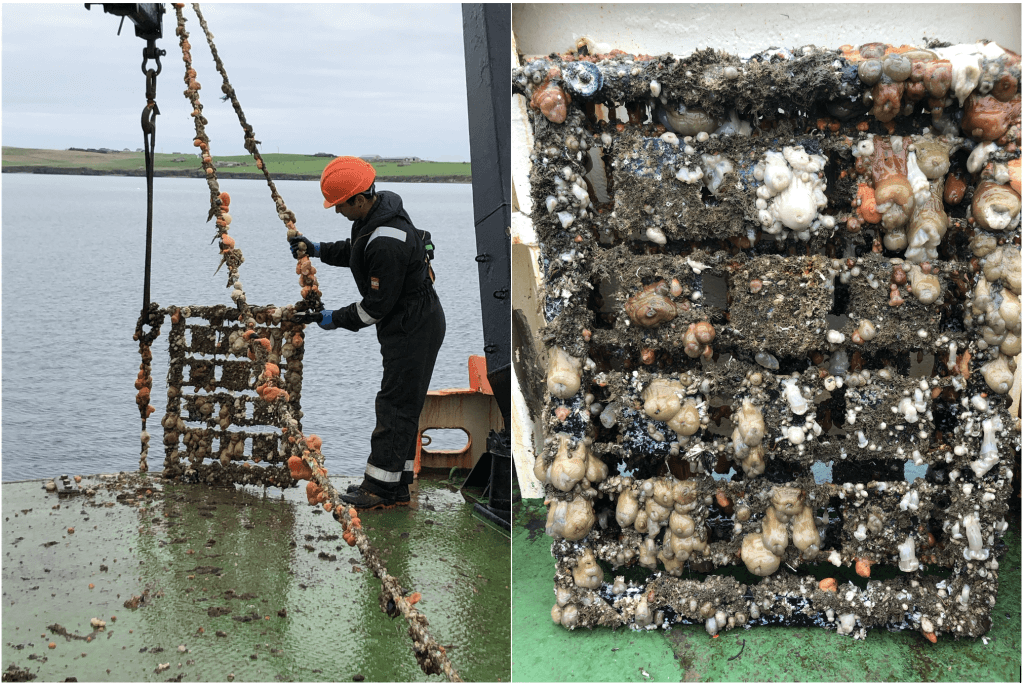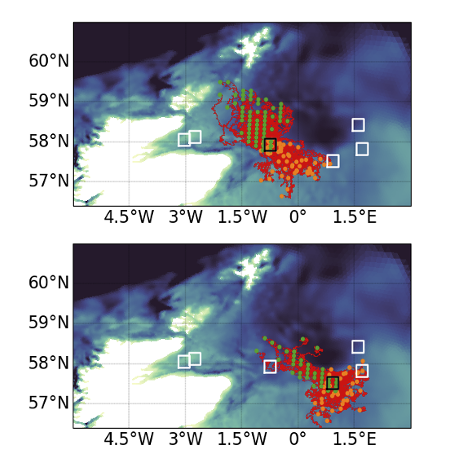To understand how marine fauna connect across artificial substrates in the North Sea in order to help decision-makers evaluate platform removal and assess future climate impacts.
Panels were deployed in multiple locations in the northern North Sea to validate settlement models, assess genetic connectivity, and predict the consequences of larval dispersion. Surveys were also conducted to capture stakeholder opinions on future marine energy scenarios in the North Sea.
 Panels retrieved from the North Sea. Image credit Heriot-Watt University.
Panels retrieved from the North Sea. Image credit Heriot-Watt University.
Early results from settlement panels at Orkney sites revealed similar species composition and settlement ratios between exposed and sheltered sites. Substrate type appeared to have little impact on what species settled on the panels. Settlement plates from three North Sea sites showed that 70% of epifaunal colonisation was dominated by 23 species typically found on artificial substrates. The North Sea panels are still to undergo genetic connectivity analysis.
Locations of particles after 1 month that pass through the black box. Start (green) / End (orange). Image credit: Professor Joanne Porter, Heriot-Watt University.
Stakeholder survey responses showed that the development of oil and gas infrastructure will likely become less of a priority over time. In the short to medium term, construction of offshore renewables will likely be prioritised. But what will happen in long term is less clear, according to stakeholders, and new challenges will arise regarding recycling and decommissioning of renewable technologies, as well as the development of new offshore industrial policy frameworks.